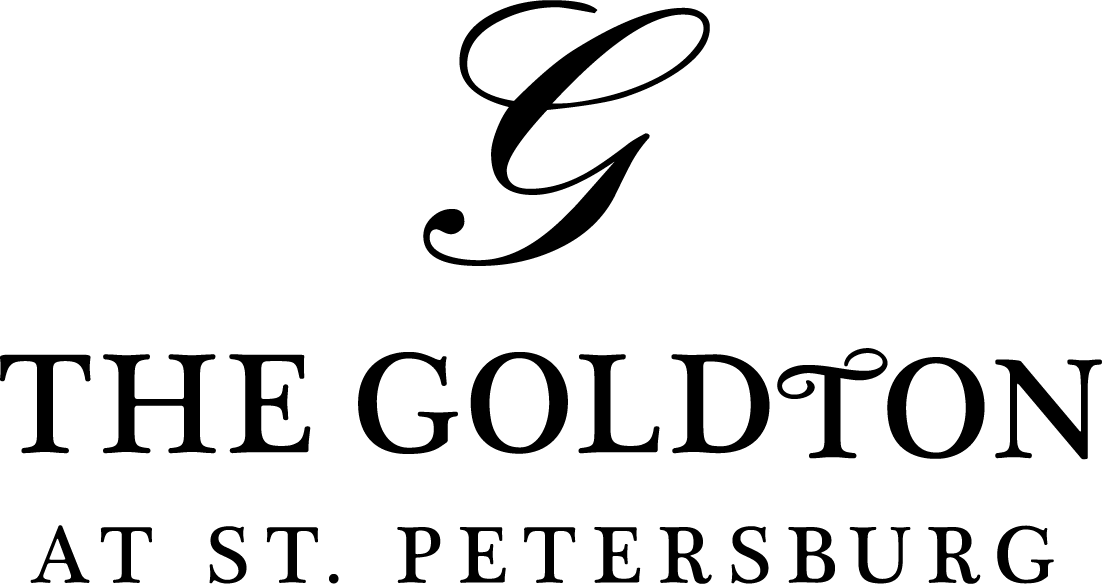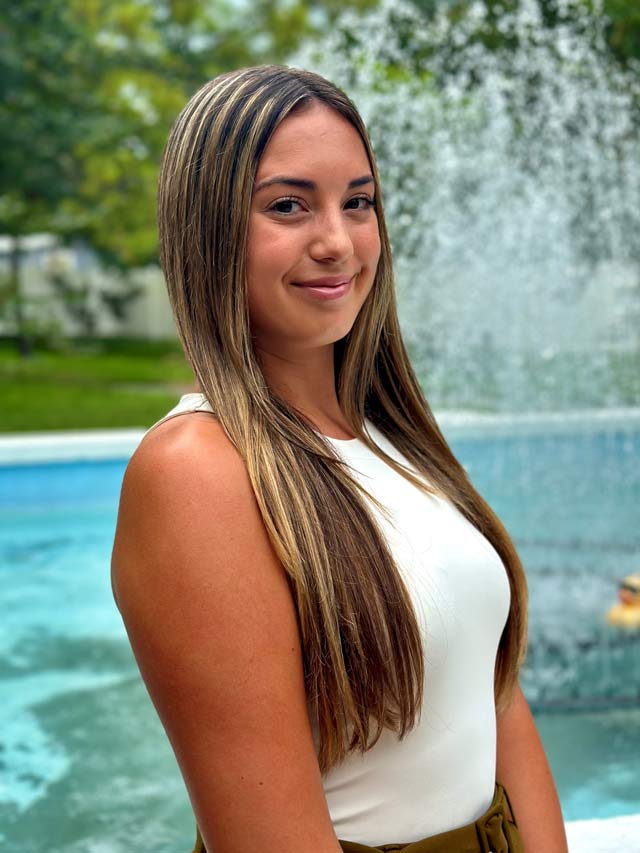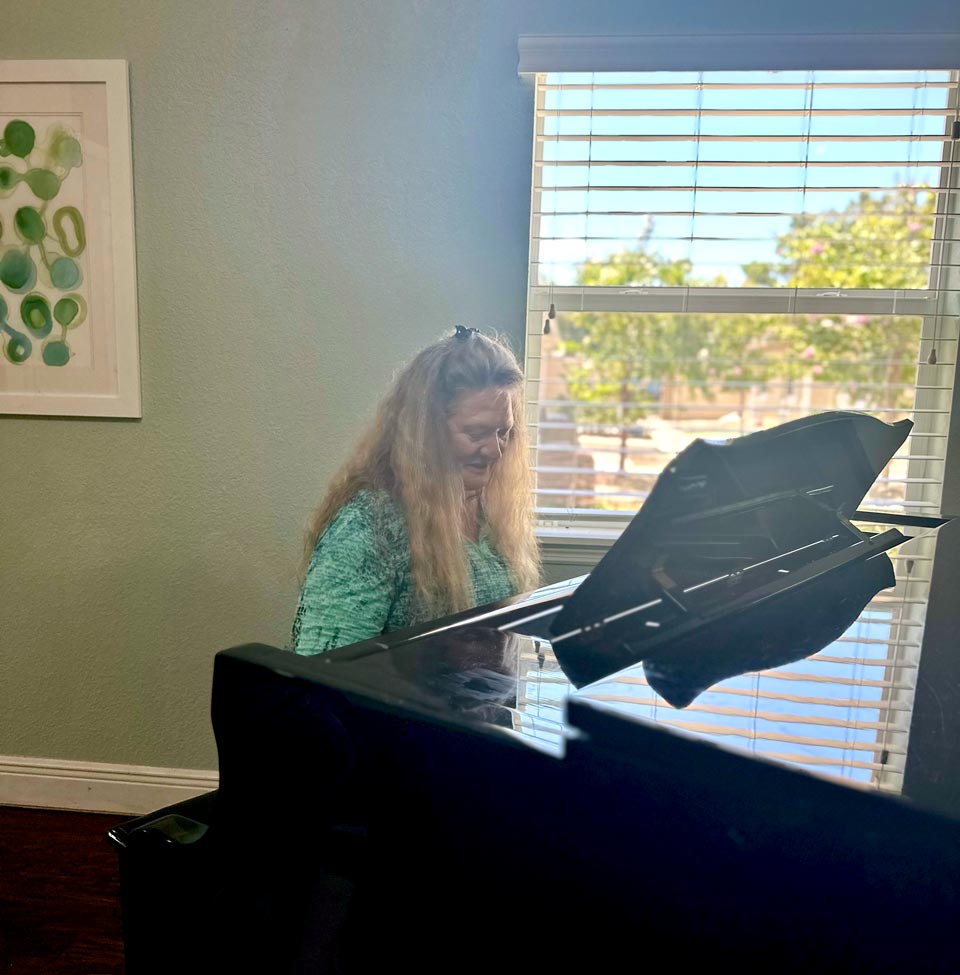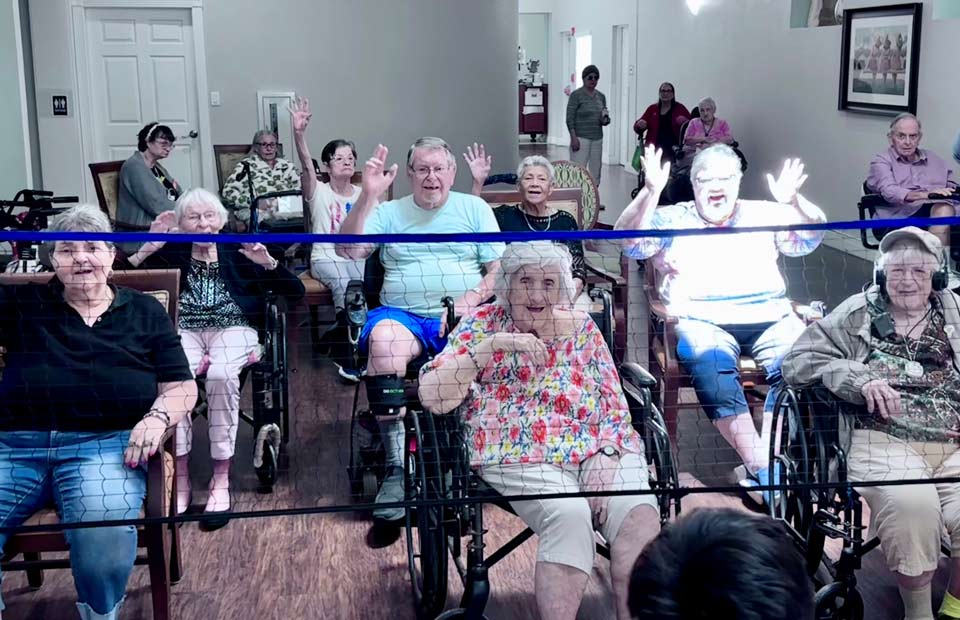October
The Goldton at St. Pete
Newsletter
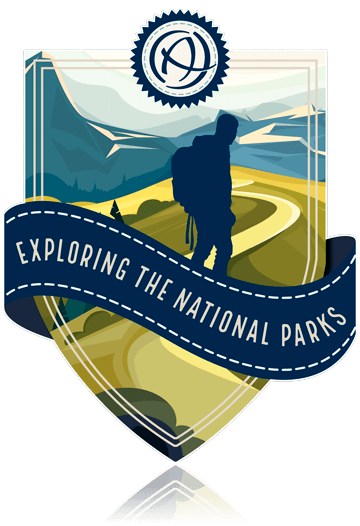

Resident´s Birthdays
Willie 10/2
Anna A. 10/3
Beulah F. 10/7
Melvin H. 10/10
Robert D. 10/10
Richard M. 10/18
George M. 10/20
Joyce Y. 10/20
Dep N. 10/20
Eugene F. 10/21
Celebrating October
October 2
Rosh Hashana
October 4
Taco Day
October 5
World Teacher Day
October 11
Yom Kippur
October 14
Columbus Day
October 14
Indigenous Peoples Day
October17
National Pasta Day
October 28
National Chocolate Day
October 31
Halloween
We also Celebrate
Julie Andrews
October 1, 1935
Jackie Collins
October 4, 1937
Chevy Chase
October 8, 1943
John Lennon
October 9, 1940
Marie Osmond
October 13, 1959
Angela Lansbury
October 19,1925
Annette Funicello
October 22, 1942
Julia Roberts
October 28, 1967
Richard Dreyfuss
October 29, 1947
Meet Madison
We would like to welcome our new nurse Maddie to the team. Originally from Upstate New York, Maddie is a 2023 graduate of Galen College of Nursing. She brings a wealth of knowledge and compassion to her role, ensuring that our residents receive the highest standard of care. Maddie has always had a passion for helping others and supporting her team, which has been evident in her commitment to nursing. Outside of work, she loves spending time at the beach, enjoying outdoor adventures, and relaxing with her beloved French bulldog, Romeo. If you have any questions or need assistance, Maddie is always here to help with a friendly smile!
Discovering National Parks- Grand Tetons
This month we are exploring Grand Teton National Park in Wyoming. Approximately 11,000 years ago the first forms of humanity touched the post-glacial valley of what would one day become Grand Teton National Park. These Paleo-Indians arrived in a thriving ecological community of plants and animals, in which they found seasonal stability. This was just the beginning of the rich anthropological history that eventually founded what is today dubbed Jackson Hole, which on the scale of geological time has been so very brief.
Grand Teton National Park was officially established as a national park by Congress in 1929. Only parts of Jackson Hole were initially protected, but as its popularity grew, so did its borders. Notable names such as Franklin D. Roosevelt and John D. Rockefeller, Jr. aided in donating and federally protecting land to be included in this area of preservation.
The Shoshone, Bannock, Blackfoot, Crow, Flathead, Gros Ventre, and Nez Perce were the primary tribes utilizing the Teton area when Europeans began to settle the land. John Colter, who was part of the famous Lewis and Clark expedition, is thought to be one of the first European explorers to visit the area.
The valleys that surround the Teton Range first attracted fur trappers, explorers and eventually homesteaders seeking expansion and wealth. Jackson Hole was no easy region to access by horse and wagon, which is why the development of railroads throughout the west in the 1880s was integral. Settlers began to create lives for themselves in the valley, but as access to the region was no easy task and neither was survival. The quality of the harsh land proved crop production very challenging and the extremity of the seasons was less than ideal- especially after the agricultural depression that began shortly after the 1920’s.
In the period following World War II, more people had the means and urge to travel around the country and visit inspiring places like Grand Teton National Park. Americans sought local adventure and the park responded to this uptick in tourism by expanding its visitor services.
Today, park visitors enjoy exploring and learning about the unique ecosystem individually or on Grand Teton national park tours. Grand Teton remains committed to protecting and preserving this beautiful land and the history that comes with it for the enjoyment and education of future generations.
Wildlife enthusiasts can learn more about the park’s animals and explore the Teton backcountry for an overnight camping experience. For those interested in educational experiences, ranger-led programs offer deeper insights into the park’s natural beauty and history.
Keeping Your Mind Active
Everyone has the occasional “senior moment.” Maybe you’ve gone into the kitchen and can’t remember why, or can’t recall a familiar name during a conversation. Memory lapses can occur at any age, but aging alone is generally not a cause of cognitive decline. When significant memory loss occurs among older people, it is generally not due to aging but to organic disorders, brain injury, or neurological illness. Here are some tips to keep your mind active!
Use Your Brain
It’s true: Use it or lose it. Stretching your brain keeps your mind sharp. People who are more active in mentally challenging activities are more likely to stay sharp. Try these:
- Read a book.
- Go to a lecture.
- Listen to the radio.
- Play a game.
- Visit a museum.
- Learn a second language.
Mix Things Up
Remember trying to talk backwards as a child? Researchers at Duke University created exercises they call “neurobics,” which challenge your brain to think in new ways. Since your five senses are key to learning, use them to exercise your mind. If you’re right-handed, try using your left hand. Drive to work by another route. Close your eyes and see if you can recognize food by taste.
Work Out to Stay Sharp
Exercise, especially the kind that gets your heart rate up like walking or swimming, has mental pluses, too. Although experts aren’t sure why, physical activity might increase the blood supply to the brain and improve links between brain cells. Staying active can help memory, imagination, and even your ability to plan tasks.
Make Friends for Your Mind
Be a people person! Talking with others actually sharpens your brain, whether at work, at home, or out in your community. Studies show social activities improve your mind. So volunteer, sign up for a class, or call a friend!
Stay Calm
Too much stress can hurt your gray matter, which contains cells that store and process information. Here are some ways to chill:
- Take deep breaths.
- Find something that makes you laugh.
- Listen to music.
- Try yoga or meditation.
- Find someone to talk to.
- Sleep and the Brain
Get enough sleep before and after you learn something new. You need sleep on both ends. When you start out tired, it’s hard to focus on things. And when you sleep afterward, your brain files away the new info so you can recall it later. A long night’s rest is best for memory and your mood. Adults need 7-8 hours of sleep every night, during which the glymphatic system cleans out waste, or “junk,” particles.
You will find many things you can do to keep your mind active on our monthly activity calendar.
GRand Teton
National Park
The most popular months to visit are May through September. During the busy summer season, most roads and facilities are open and a full range of programs are available to enjoy.
More Articles
Emotional Support for Aging Dads – What Senior Fathers Really Need
We talk about senior health. We talk about senior safety. But how often do we talk about senior dads and their emotional needs? The truth …
How Memorial Day Lives On in Senior Communities 2025
Share our good news:
Recipe Spotlight
Soda Bread
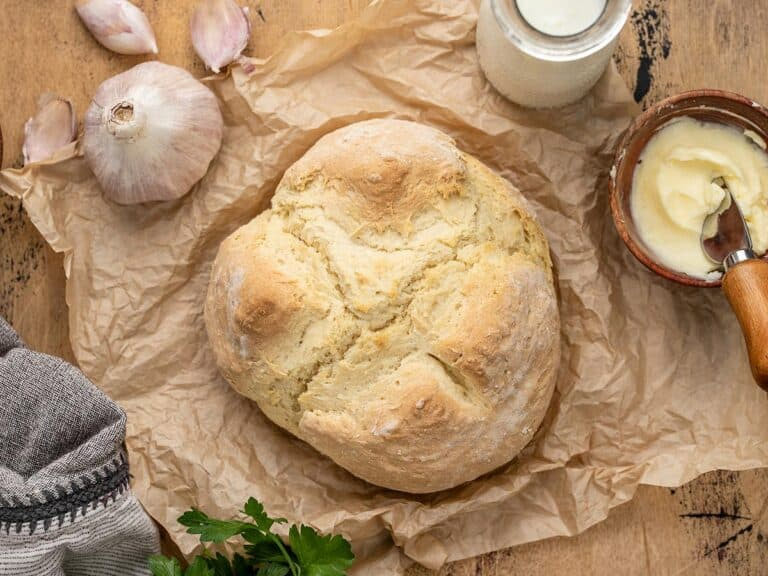
Ingredients
2 cups all-purpose flour
1/2 tsp baking soda
1/2 tsp salt
1 cup buttermilk
Instructions
Set a rack in the middle of your oven and preheat it to 450°F. Mix the flour, baking soda, and salt in a large bowl until they are fully incorporated.
Form a well in the center of the flour mixture and fill the well with the buttermilk.
Use a fork to incorporate the flour into the buttermilk little by little until a thick batter forms. Use your hands to incorporate the final bits of flour and gently shape the batter into a dough. Do not overwork the dough.
Transfer the dough to a floured work surface and gently shape it into a round 6 inches in diameter and about 1 1/2 inches thick.
Place the dough in a Dutch oven or cast iron skillet. Use a sharp knife to cut a large x into the top of the dough.
Bake for 10 minutes at 450°F. Then lower the oven temperature to 400°F and continue baking until the bread is golden brown and crusty on the outside, about 20 minutes. Transfer to a rack and cool.
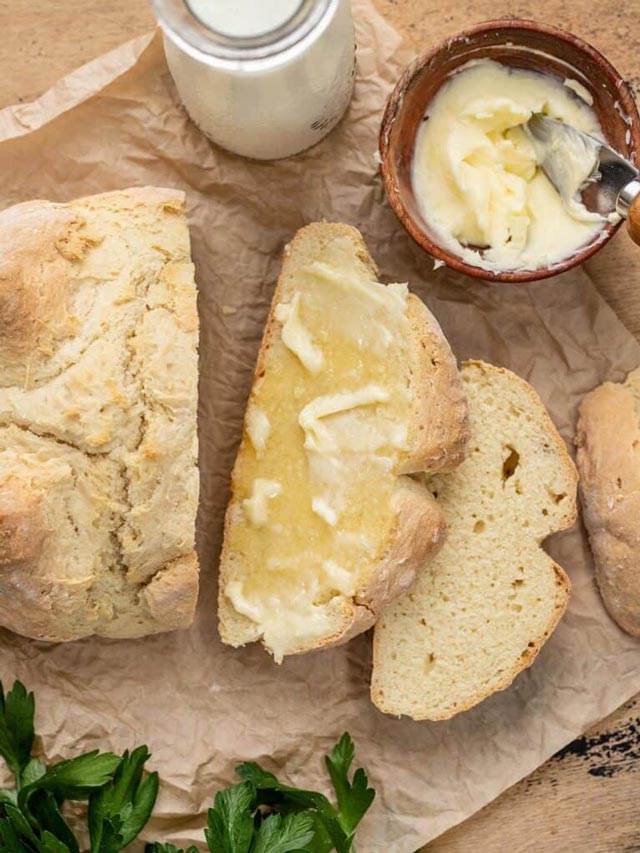
Resident of the Month
Linda Roser

Meet Linda, our resident of the month. Linda is from Utica. New York. She moved to St. Petersburg a few years ago to be closer to her sister Sue! Linda’s dad was a pitcher for the New York Yankee Baseball team and later owned a sporting goods store. Linda has fond memories of her family and living in NY. She enjoys cross-stitch reading and her favorite activities here are the Goldton are Bingo and live music!
Associate of the Month
Mara Kene
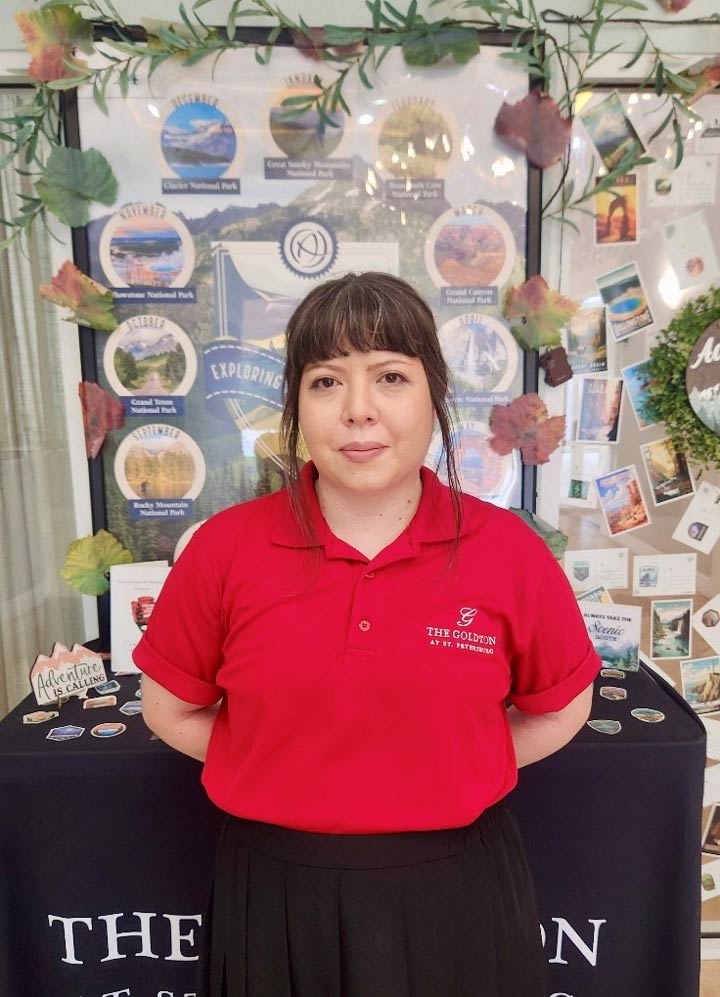
Mara is a wonderful addition to our team here at The Goldton at St. Petersburg! She works as our evening and weekend concierge; she loves getting to know the residents and being able to chat with them and help them out with whatever they need on her shifts! We are so lucky to have her as part of the team!
Collaborators

Lisa Stouffer

